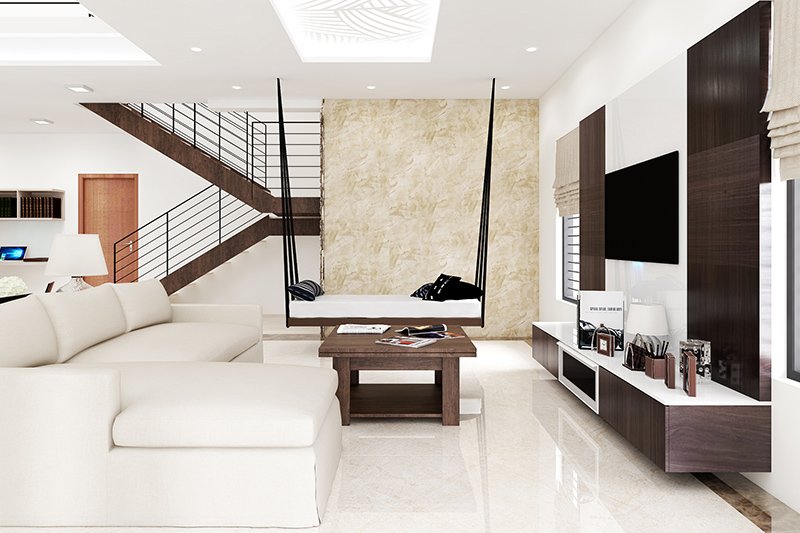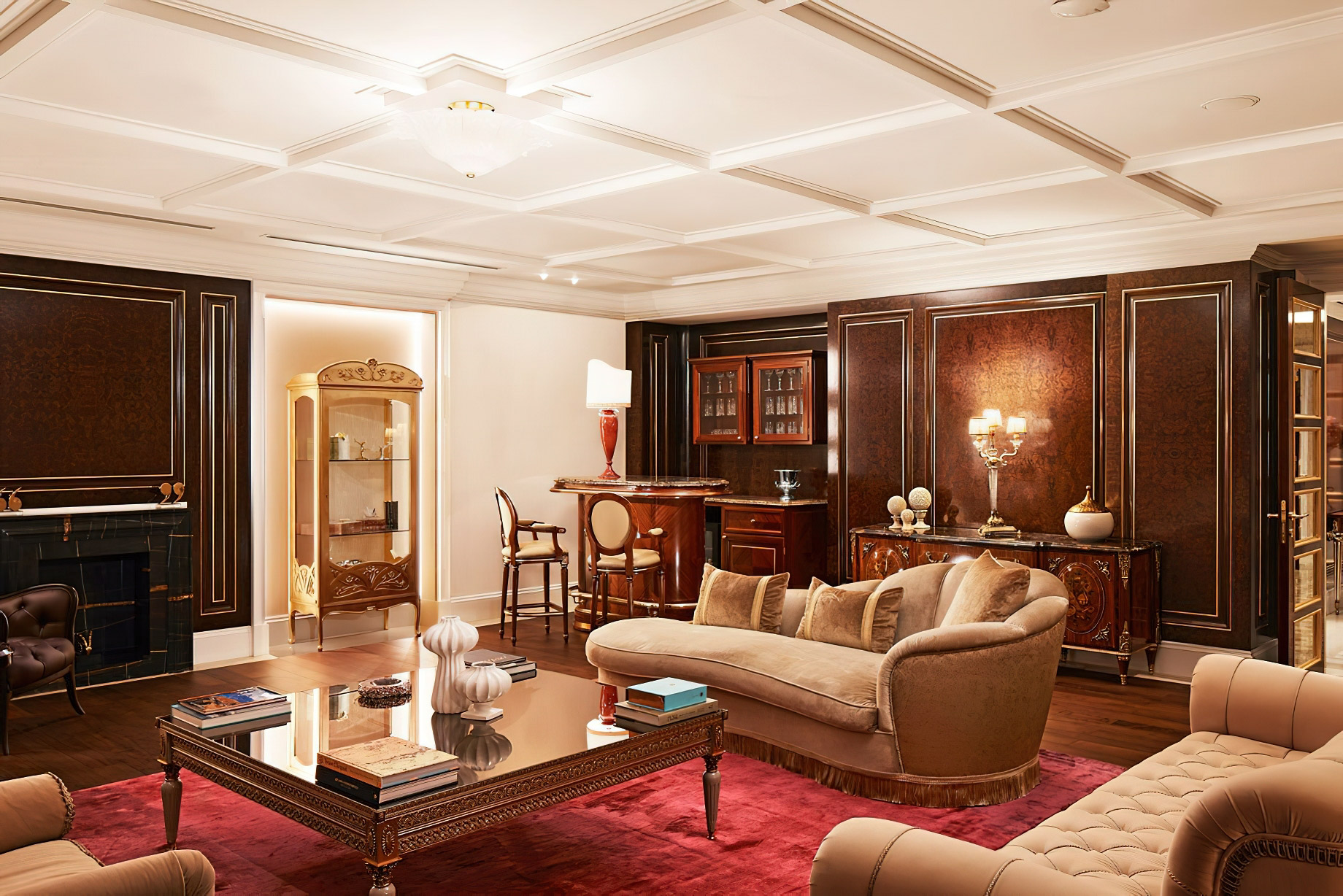One of the most vital elements to consider in your kitchen designing plan is the layout. A proper layout is essential to create an efficient and ergonomic kitchen space, as it helps to assign every function with its own work zone to minimize movement. When creating a kitchen design plan, it is important to consider the size and shape of the kitchen, as well as the positions of all the cabinets and appliances. Layout and Work Zones
Another consideration to consider while planning kitchen design standards is task spacing. It is important to create a space between each appliance and work zone where users can move and cook comfortably without feeling cramped. The goal is to create an ergonomic space that is easy to move in. It is important to allow enough space for the user to move comfortably when they are cooking or adding ingredients to the food.Task Spacing
Designating areas for prep and cooking is another important part of kitchen design standards. It is important to allow enough room for food preparation and cooking that is not only safe but also convenient. It is best to separate cooktop and oven from the prep area, as it will help to reduce movement and make the job more efficient. Additionally, it is important to ensure that there is enough counter space for meal prep and that all appliances and cookware are easily accessible.Prep and Cooking Areas
Kitchen islands are a common feature in many modern kitchens and can add an ideal centerpoint to the space. Kitchen islands are helpful to create an additional surface to prepare meals, as well as provide extra storage space for items like pots and pans. They can also be used as a dining space, additional seating, and even a study area.When considering adding a kitchen island in your plan, it is important to create an ideal flow between different zones and allow maximum accessibility. Kitchen Islands
Making sure that there is enough storage for items in your kitchen is essential. The correct amount and type of storage can help to optimize the kitchen space so that it is both efficient and aesthetically pleasing. Cabinets, pull-out drawers and open shelves are all beneficial when it comes to maximizing storage. It is necessary to allow enough space for each item to be stored and a generous amount of cabinet space to avoid clutter. Storage
When planning the kitchen design standards, it is important to consider the location of the appliances and the type and size that will be most suitable. Gas or electric cooktops, fixed or portable ovens, microwaves and refrigerators are among the most frequently used appliances in the kitchen. It is essential to designate areas for each appliance and provide enough space to open and close doors and drawers freely. It is also important to choose appliances that most suit the user’s needs and budget. Appliances
When it comes to kitchen design standards, lighting is often overlooked but it is essential for both safety and visibility. It is important to create a well-lit space for all activities, such as food prep, cooking, dining and cleaning. To avoid fatigue and eyestrain, it is important to choose the correct type of lighting for each task. A combination of natural and artificial lighting is essential for maximum visibility and utility. Lighting
Sinks in the kitchen are one of the most used and overlooked kitchen design standards. Depending on the size of the kitchen, it is important to choose the right size of a sink to optimize the space and avoid overcrowding. It is also important to choose a sink that is easy to keep clean and can be used safely and efficiently for food preparation and clean-up. Sinks
Countertop surfaces are one of the most important elements in a kitchen. They are used for prep, food service, and clean-up, so choosing the right material is essential to optimize the space. Materials like granite, quartz, laminate, and stone are all recommended for their durability, easy maintenance, and style. It is also important to consider the height and width of the countertop, as it will depend on the size of the kitchen. Counters
The kitchen floor is another essential part of the kitchen design standards. Since the kitchen is a high-trafficked area, it is important to choose the right type of flooring to prevent slips and falls, as well as create an aesthetic look. Materials like hardwood, vinyl, and bamboo are all recommended for their durability, easy maintenance, and attractive designs. Additionally, it is important to consider the color and pattern of the floor as it will contribute to the overall look of the kitchen. Flooring
Wall backsplashes are not only essential for protecting the wall from splatters, they also add to the overall aesthetic of the kitchen. When choosing a backsplash, it is important to consider the color, material, and shape to achieve the desired look. It is essential that you find a material that is both easy to clean and resistant to heat, water, and stain. Glass, tile, stainless steel, and stone are all materials that are recommended for their low maintenance and unique design. Wall Backsplashes
Kitchen Design Standards: A Guide to Building an Attractive, Functional Kitchen
 A kitchen is perhaps the most important and frequently used room in a home. It's an area of great activity – preparing meals, socializing, entertaining, and cleaning are all core elements of the kitchen. Accordingly, it is extremely important to consider the design of a kitchen carefully to ensure that it is both functional and attractive.
Kitchen design standards
offer guidance in this critical task.
When designing a kitchen, there are several areas to consider. Each factor should be given appropriate attention in order to create an attractive kitchen that meets
kitchen design standards
.
A kitchen is perhaps the most important and frequently used room in a home. It's an area of great activity – preparing meals, socializing, entertaining, and cleaning are all core elements of the kitchen. Accordingly, it is extremely important to consider the design of a kitchen carefully to ensure that it is both functional and attractive.
Kitchen design standards
offer guidance in this critical task.
When designing a kitchen, there are several areas to consider. Each factor should be given appropriate attention in order to create an attractive kitchen that meets
kitchen design standards
.
Storage
 Storage space in a kitchen is essential and should be taken into consideration when designing. There should be ample space to store pots, pans, food, and other items. Kitchen design standards dictate that the storage should be efficient while taking into consideration the aesthetic quality of the items being stored. Cabinets, cupboards, and shelves should be carefully arranged to maximize the available storage space while keeping the kitchen organized.
Storage space in a kitchen is essential and should be taken into consideration when designing. There should be ample space to store pots, pans, food, and other items. Kitchen design standards dictate that the storage should be efficient while taking into consideration the aesthetic quality of the items being stored. Cabinets, cupboards, and shelves should be carefully arranged to maximize the available storage space while keeping the kitchen organized.
Appliances
 Appliances are a central part of any kitchen. Depending on the size and layout of the kitchen, a range of appliances can be included, including ovens, dishwashers, refrigerators, and microwaves. When selecting and installing appliances,
kitchen design standards
dictate that the appliances should be arranged to maximize efficiency and safety of use while enhancing the aesthetic look of the kitchen.
Appliances are a central part of any kitchen. Depending on the size and layout of the kitchen, a range of appliances can be included, including ovens, dishwashers, refrigerators, and microwaves. When selecting and installing appliances,
kitchen design standards
dictate that the appliances should be arranged to maximize efficiency and safety of use while enhancing the aesthetic look of the kitchen.
Worktops
 The worktop is one of the most important aspects of any kitchen. It is the area where much of the food preparation and cooking takes place. The worktop should be durable, hygienic, and attractive. A good worktop should also be easy to clean and resistant to wear and tear.
Kitchen design standards
suggest opting for worktops made of materials such as granite, stainless steel, and quartz.
The worktop is one of the most important aspects of any kitchen. It is the area where much of the food preparation and cooking takes place. The worktop should be durable, hygienic, and attractive. A good worktop should also be easy to clean and resistant to wear and tear.
Kitchen design standards
suggest opting for worktops made of materials such as granite, stainless steel, and quartz.
Lighting
 Proper lighting is essential for a functional kitchen. Lighting should be sufficient for all areas of the kitchen for tasks such as food preparation, cooking, and cleaning. Kitchen design standards dictate that lighting should be adequate for the size of the kitchen, with task lighting used to highlight areas when needed. Natural light should also be taken into account when designing the kitchen.
Proper lighting is essential for a functional kitchen. Lighting should be sufficient for all areas of the kitchen for tasks such as food preparation, cooking, and cleaning. Kitchen design standards dictate that lighting should be adequate for the size of the kitchen, with task lighting used to highlight areas when needed. Natural light should also be taken into account when designing the kitchen.













































































































